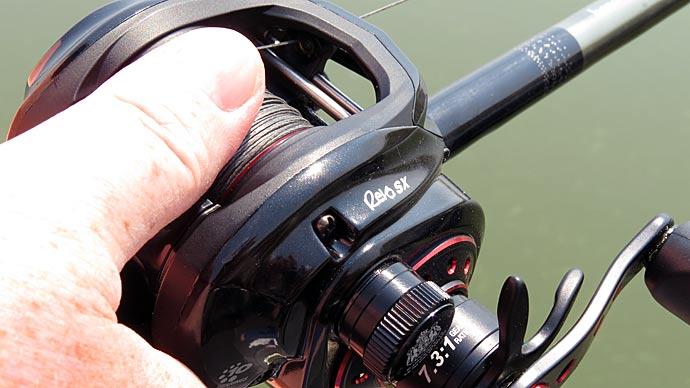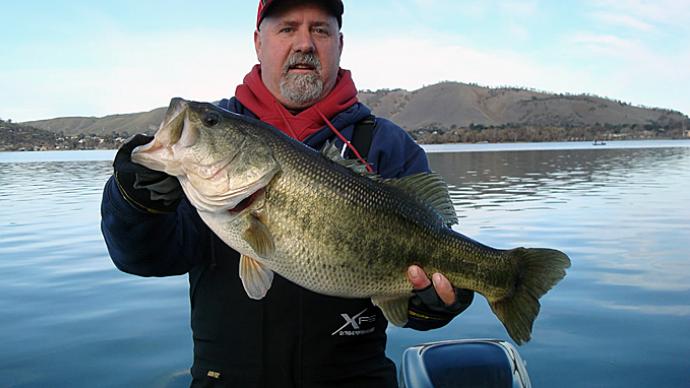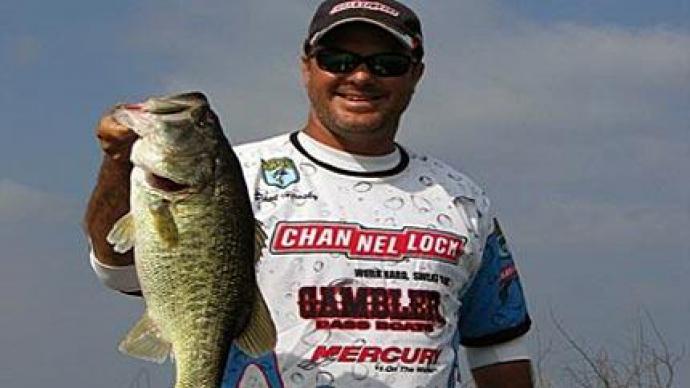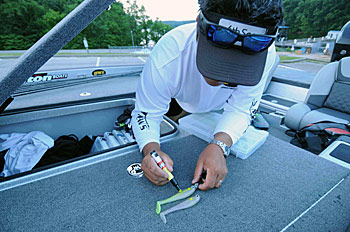
When competing in tournaments, Marcus Sykora knows quality rather than quantity is the key to winning.
A lure that has produced quality bass and tournament victories for Sykora is a swimbait. The 2014 Bass Fishing League (BFL) All-American champion discloses he has caught “a bunch of 7-pounders” relying on a swimbait while fishing Ozark lakes throughout the years.
“What I love about swimbaits are that they are a big fish bait, and contrary to the public belief, I think you can do an excellent job of covering water with them,” Sykora says. “You must have confidence in that bait and understand structure fishing and staying off the contours and break lines. You also have to throw it all day. I might get only seven bites a day on it, but my five keepers will weigh 23-plus pounds.”
The Missouri angler believes swimbaits are reliable for covering water because the lures are heavy and can be cast long distances. He suggests with a “handful of casts,” anglers can cover an entire point fishing with a swimbait.
Since it is an ideal shad-imitator, Sykora uses a swimbait whenever bass are keying on baitfish, which is year-round. His favorite time of the year to throw a swimbait runs from prespawn to post-spawn, and he considers the best scenario for a swimbait when the last wave of prespawn bass and the first wave of post-spawn bass are setting up in the same area. “If you find that, it is just magical,” he says.
Sykora's favorite swimbait is a 5-inch Zoom Swimmer in ayu or gizzard shad colors. Sykora rigs it on a 1/2- or 3/4-ounce 6th Sense Divine Swimbait Jig Head. “(The jighead) has a perfect keel-weighted head and an excellent hook,” Sykora says. “It also has a screw lock, so it holds the bait up well.”
Adding color and scent are two modifications Sykora makes to his swimbaits. He colors his swimbait with a Zoom Chartreuse Dye Marker by highlighting the middle of the lure with a chartreuse line on both sides. “It gives the lure a bonier color in the water, so it stands out more and does a good job of leaving a scent trail to it.”
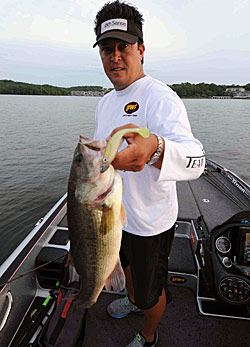
Sykora rubs Fish Sticks KVD Lure Enhancer (made from 100 percent fish oil) on the swimbait. He believes the attractant improves the lure’s “viscosity and helps the fish get the lure in its mouth better.” The scent trail emitted by the Fish Sticks also triggers strikes from curious bass following the bait.
Sykora’s swimbait gear consists of a 7 1/2-foot Lew's Mark Rose Ledge Swimbait Rod and a Lew’s BB-1Pro Series Speed Spool 7.1:1 baitcast reel spooled with 20-pound Seaguar InvizX Fluorocarbon line.
Water clarity determines whether Sykora throws a swimbait or some other lure. “I have used it in colored water before, but water visibility is a factor,” Sykora says. “I have never had any success with it in really, really off-colored water because usually in that off-color water, the fish live a lot shallower.” So when bass are shallow, Sykora opts for a crankbait or lipless rattling crankbait; he selects a swimbait for fishing over deeper structure with a water visibility of 2 to 4 feet.
The season dictates what structure Sykora targets with his swimbait. “I love to fish it off the flats in the fall and the middle of the spawning pockets in the spring,” he says. Other spots Sykora keys on with a swimbait are break lines on channel swings, points, and humps.
A swimbait is versatile enough to run at various depths, so Sykora continuously checks his electronics to determine how deep to fish the lure. “If all the fish are suspended in 10 feet of water, then that gives me a good idea,” Sykora says. “The key to swimbait fishing is the sink count and the retrieve rate. Those are the two most pivotal factors, but they are also the easiest once you figure them out. “
Sykora estimates the sink rate of his swimbait by stripping off line from his reel and placing his bait at the butt of the rod to measure 7 1/2 feet of line. He drops the lure in the water on a slack line and counts to see how long it takes for the line to straighten out. “So if it takes 7 1/2 seconds for that line to get tight, then I know the sink rate and can work on my count,” he says.
For suspended fish, Sykora matches his swimbait with the 1/2-ounce jighead and retrieves the lure at the desired depth with a steady retrieve at a medium speed.
When targeting bass hugging the bottom, Sykora selects the 3/4-ounce jighead. After casting and letting the lure settle to the bottom, Sykora turns his reel handle two or three times to lift the swimbait off the lake’s floor slightly. He repeats the lift-and-drop process until his swimbait falls into an abyss.
Reeling the swimbait rather than lifting it off the bottom by raising his rod helps Sykora keep his lure in the strike zone better. “Whenever the fish are relating to the bottom, you don’t want that swimbait to come off the bottom very far,” he says.
Whether fishing for bottom-hugging or suspended bass, Sykora has confidence his swimbait will produce the quality fish he needs to win a tournament.
BassResource may receive a portion of revenues if you make a purchase using a link above.


